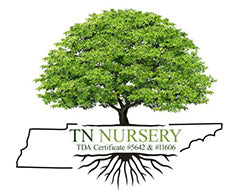





























About Shade Perennials
Shade perennials are An invaluable addition to any landscape. They offer many benefits that enhance the aesthetic appeal. Ecological balance.The overall functionality of outdoor spaces. These plants, adapted to thrive in shaded areas, provide numerous advantages that make them a worthwhile choice for residential and commercial landscapes.
First and foremost, they bring a lush and refreshing element to shaded areas. Their foliage comes in various colors, textures, and shapes, creating visual interest and contrast in spaces that might otherwise appear dull and lifeless. From the delicate fronds of ferns to the vibrant blooms of hostas and the intricate foliage patterns of coral bells, these plants offer a diverse range of options for designing visually captivating landscapes.
Shade Perennials Are Low-maintenance
Another compelling advantage of them is their low-maintenance nature. Once established, they typically require less water and upkeep than sun-loving plants. This makes them an excellent choice for homeowners and landscape professionals looking to reduce water consumption and minimize the time and effort needed for garden maintenance. Furthermore, the longevity of perennials means that they return year after year, saving money and effort on replanting.
They also contribute to the ecological health of the landscape. Their dense foliage provides a habitat and food source for various wildlife, including insects, birds, and small mammals. This fosters biodiversity and creates a balanced ecosystem in your garden, contributing to the environment's overall health. Additionally, many root systems help prevent soil erosion and improve soil structure, making them eco-friendly for landscaping projects.
Furthermore, these plants play a crucial role in temperature regulation. Shading the ground and reducing the heat absorbed by the soil helps maintain cooler temperatures in shaded areas. This can be very beneficial in metropolitan settings where they can mitigate the urban heat island effect, improving the comfort of outdoor spaces during hot summer months.
For those concerned about sustainability, they are often more drought-tolerant and pest-resistant than sun-loving plants. This resilience reduces the need for chemical pesticides and excessive irrigation, promoting environmentally friendly gardening practices.
In conclusion, the benefits of incorporating them into your landscape design are multifaceted. They enhance the beauty of shaded areas, require less maintenance, contribute to ecological diversity, regulate temperatures, and promote sustainable gardening practices. Whether you have a small backyard garden or a sprawling commercial landscape, shade perennials are a valuable and versatile addition that can transform your outdoor space into a thriving, sustainable, and visually appealing environment.

